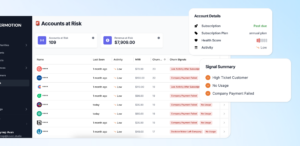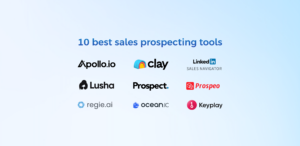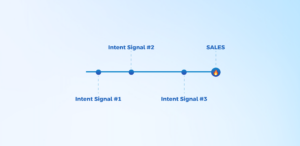Sales has become more informed than ever lately. Before the change started, sales teams relied strictly on cold emailing or cold calling to generate leads into their pipelines. They were sending thousands of emails a day using generic content and templates. It used to work, but not anymore.
“The hardest thing about B2B selling today is that customers don’t need you the way they used to. In recent decades sales reps have become adept at discovering customers’ needs and selling them “solutions”—generally, complex combinations of products and services.” Harvard Business Review
Buyer behavior has changed. They no longer want to reply to the same emails sent to 999 other people. They now hold the power, not sales leaders.
As a result, buyer behaviors have become signals for the sales leaders, instead of their sales notes leading the sales process. Customer behaviors and intent data inform sales processes, and that’s what we call signal based selling.
You might be a sales leader, SDR or a founder, but I know you are looking for signals that bring success to your sales, hence, business growth. Signal based selling is becoming hot, that’s why, let’s understand what is it, how you can use it and all things related to it.
What is Signal Based Selling?
Signal based selling is a sales strategy that use buyer intent data to create leads, generate pipelines, nurture users and convert them into customers.
It’s about using the signals a potential customer shows as a trigger to connect with them with high relevance at the most appropriate time. That’s why it also called trigger based selling.
“The old playbook no longer works. Star salespeople now seek to upend the customer’s current approach to doing business.” Harvard Business Review
Especially in product-led businesses and self-service SaaS models, signal-based selling is the sure way to successful sales operations. This approach relies on various signals of intent that potential buyers provide through their online behavior. These signals can include starting a free trial, completing an onboarding, inviting a team member or setting up an integration.
Signal Based Selling Formula
Sales strategies do not have a formula that can be calculated like a mathematical equation, but signal-based selling can be distilled into a simple yet powerful formula:
Signal Based Selling = Intent + Timing + Relevance
1. Intent
Intent is the foundational element of signal based selling. It refers to the signals or triggers that indicate a lead’s readiness to buy. These signals, intent data, can be seen through various actions such as:
- Visiting key pages on your website (e.g., pricing or product features pages)
- Reviewing customer reviews or case studies
- Registering for webinars or attending online events
- Engaging with your content
- Starting a free trial or signing up for a demo
- Completing onboarding
- Setting up your features
Understanding and identifying these intent signals allow sales teams to prioritize leads that are more likely to convert. It’s about focusing on those who are showing interest rather than casting a wide net.
2. Timing
Timing is important in signal based selling. Even if you have identified a lead with strong intent, reaching out at the wrong time can diminish your chances of success. Timing involves:
- Engaging with prospects when they are actively researching solutions
- Following up promptly after a signal is detected
- Aligning outreach with the prospect’s buying cycle and decision-making timeline
The right timing ensures that your sales efforts are not just relevant but also well-received. It increases the likelihood that your message will be seen and acted upon.
3. Relevance
Relevance is the final piece of the signal based selling formula. It involves customizing your communication and offerings. This can be achieved by:
- Personalizing emails and messages based on the prospect’s behavior and preferences
- Providing content and solutions that address the prospect’s pain points
- Demonstrating an understanding of the prospect’s industry and unique challenges
When your outreach is relevant, it meets more with the prospect meaningfully, making them more likely to engage and move forward in the buying process.
How to Apply Signal Based Selling
To effectively apply this formula, sales teams should:
1. Use Intent Analytics Tools
Use intent analytics tools like UserMotion to track and analyze buyer behaviors. UserMotion helps you to detect the signal that you need for creating your sales process. For example, if a user that fit in your ideal customer profile started a free trial and completed several milestone events, it is a good opportunity.
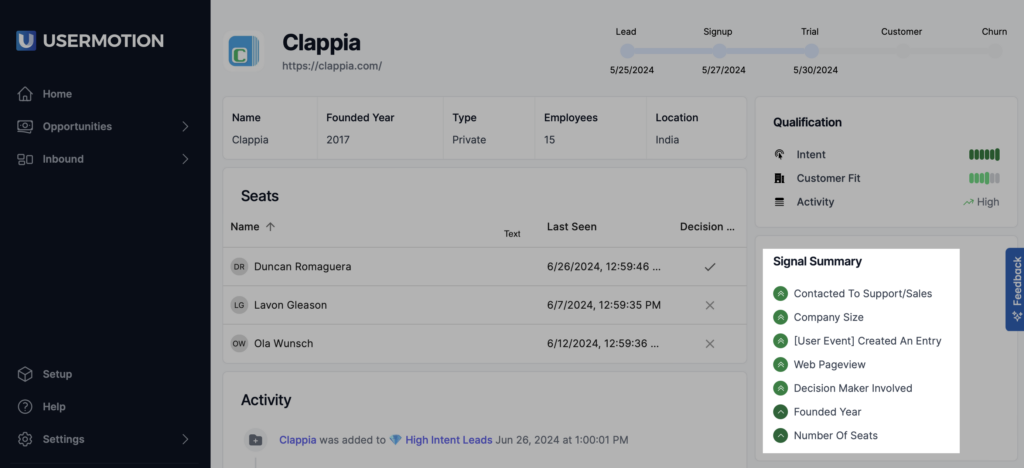
At that point, UserMotion helps you see the intent signals in the Signal Summary.
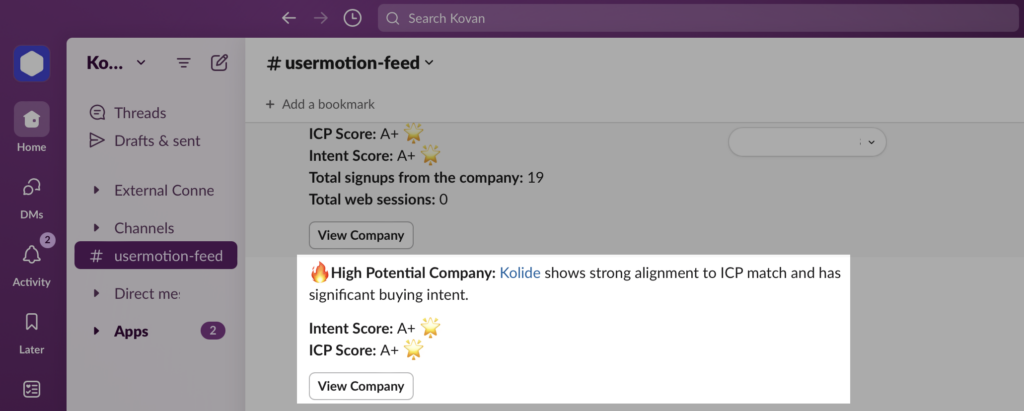
It sends you notification in real-time on Slack, Discord or email when the signal occurs for timely engagement.
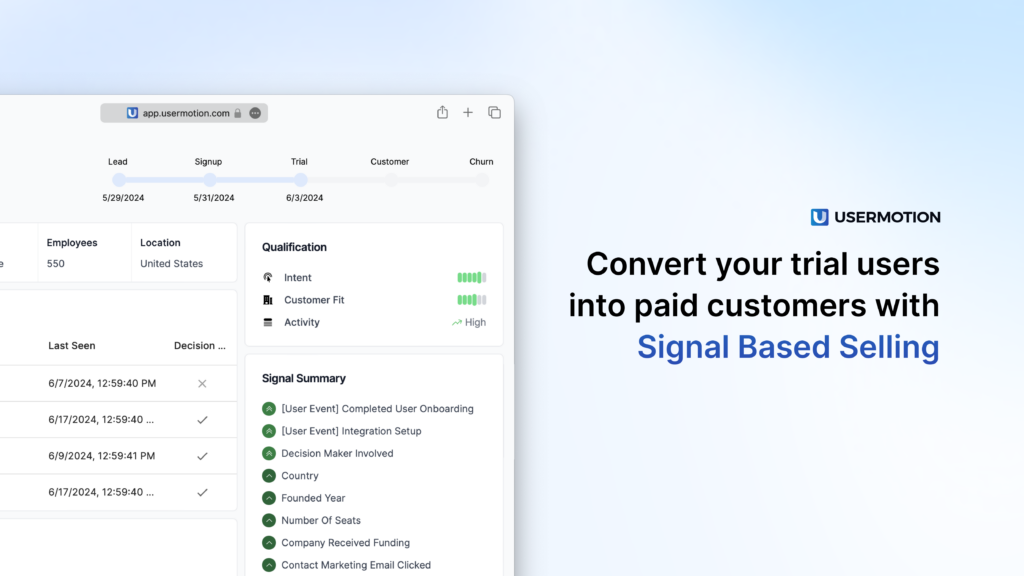
2. Integrate Data Sources
Ensure that all relevant data points are integrated into a unified system. This provides a comprehensive view of each prospect’s journey and intent signals.
3. Train Your Sales Team
Equip your sales team with the knowledge and skills to interpret intent data and apply it effectively. Continuous training on the latest tools and techniques is crucial.
4. Develop Targeted Content
Create content that addresses specific needs and pain points identified through intent signals. This can range from personalized emails to targeted marketing campaigns.
5. Monitor and Optimize
Regularly review and refine your signal-based selling approach based on performance metrics and feedback. This iterative process helps in adapting to changing buyer behaviors and improving overall effectiveness.
Why Signal Based Selling is The Way?
Signal-based selling has become the way in today B2B sales environment due to several key reasons:
1. Lead Quality
Signal-based selling allows sales teams to focus on high-quality leads who have shown clear interest in the product or service. This targeted approach increases the chances of conversion.
2. Personalized Engagement
With insights into a lead’s behavior, sales reps can customize their communication to increase relevancy. Personalized outreach is more likely to create relationships meaningfully and turn this into a real opportunity.
3. Optimal Timing
Knowing when a potential customer is actively researching or considering a purchase enables sales teams to engage at the right moment. Timely interactions can significantly boost the likelihood of conversion.
4. Resource Efficiency
By prioritizing leads based on their engagement and intent signals, sales teams can allocate their resources more effectively. This ensures efforts are concentrated where they are most likely to use you, improving overall efficiency.
5. Increased Conversion Rates
Signal-based selling focuses on leads that have already demonstrated intent, which naturally leads to higher conversion rates compared to traditional, less targeted methods.
6. Data-Driven Decisions
Sales strategies informed by real-time data are more agile and can be adjusted based on what’s actually working. This data-driven approach ensures continuous improvement and adaptation to changing buyer behaviors.
7. Better Customer Retention
This approach doesn’t stop at the point of conversion. It also involves monitoring customer usage patterns to identify signals that might indicate a risk of churn or opportunities for upselling and cross-selling, thus enhancing customer retention.
Conclusion
Signal-based selling transforms buyer behaviors into actionable signals for sales leaders, aligning sales efforts with customer needs and behaviors. Whether you are a sales leader, an SDR, or a founder, understanding and implementing signal-based selling can drive your sales success and business growth.
Key Takeaways
- Signal-based selling is a strategy: It uses buyer intent data to create leads, generate pipelines, nurture users, and convert them into customers by focusing on intent, timing, and relevance.
- Tools for signal-based selling: Use intent analytics tools like UserMotion to track and analyze buyer behaviors, detect signals, and receive real-time notifications for timely engagement.
- Signal-based selling enhances lead quality: By focusing on high-quality leads who have shown clear interest, it increases the chances of conversion.
- Signal-based selling enables personalized engagement: Tailor communication to address specific needs and interests based on a prospect’s behavior, making outreach more effective.
- Signal-based selling optimizes timing: Engage with prospects at the right moment when they are actively researching or considering a purchase, increasing conversion rates.
- Signal-based selling improves resource efficiency: Prioritize leads based on their engagement and intent signals, ensuring that sales efforts are concentrated where they are most likely to yield results, enhancing overall efficiency.


